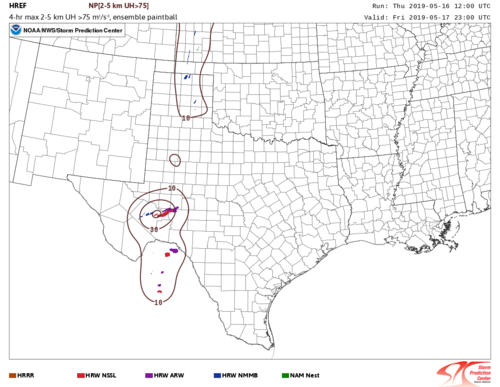Mikaela Norris
EF2
I will be targeting SW Texas. The capping issues are what concern me the most, but the last couple of runs of the NAM seem to be showing the cap eroding over a wider area in the early to mid afternoon and mostly staying that way, especially SW of SJT. We are getting into the outer limits of the RAP's range now too. I won't pretend to know enough to be able to tell you whether it's accurate that far out or not, but the 09z run does seem to be trending similarly to what the 06z NAM was showing. As stated before, the road network isn't great, but the northern targets aren't an option for me logistically, so I'm hoping for the best. Luckily it is looking decent so far.
Last edited:

